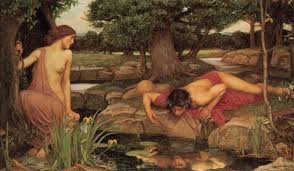Despite there being no clear evidence that the flower’s name derives directly from the Greek myth of Narcissus, who drowned while gazing at his own reflection in the water, the two are firmly linked in popular culture and the flower taken as a symbol of vanity. Another Greek myth finds Persephone, daughter of the goddess Demeter, lured to her doom in the Underworld by the god Hades while picking a narcissus flower.
In ancient China, a legend about a poor but good man holds he was brought many cups of gold and wealth by this flower. Since the flower blooms in early spring, it has also become a symbol of Chinese New Year. Narcissus bulb carving and cultivation is even an art akin to Japanese bonsai. If the narcissus blooms on Chinese New Year, it is said to bring extra wealth and good fortune throughout the year. Its sweet fragrances are highly revered in Chinese culture.
In classical Persian literature, the narcissus is a symbol of beautiful eyes, together with other flowers that equal a beautiful face with a spring garden, such as roses for cheeks and violets for shining dark hair.
The narcissus, otherwise known as daffodil, is the national flower of Wales, where it is traditional to wear a daffodil or a leek on Saint David’s Day (March 1). In Welsh the daffodil is known as “Peter’s Leek”, cenhinen Bedr or cenin Pedr). You can read more about daffodil and spring here.

